This article is reposted here from my LinkedIn blog (at the request of Marko Rillo), in addition to my more recent experience with LSP posted here yesterday.
It’s a good example of why just playing with LEGO and hoping for random inspiration is not enough – a realisation I had 2 years ago (when I wrote this article) and before I discovered LSP.
PS. If you’re wondering why all the LEGO pieces are white, at the time I was inspired by LEGO Architecture Studio :-) (architecture being another interest of mine)
Using LEGO to explain your service offering
Many consultants provide more than one type of service, myself included. This is great for clients, but the services on offer are not always easily understood.
It’s hard to resist the common mistake of telling people the complete list of things you can do. It’s a cliché, but it’s rarely what people need – at least not the whole list. Besides, prospective clients often have trouble picturing your service in their own context. It’s like going round the office with a box of chocolates asking people if they’d like some. But some may prefer a biscuit, or a drink, or indeed a printer refill.
Today I spent some time thinking about my strategy as a consultant. I’m usually first onsite to gather client requirements, formulate the strategy and roadmap, and then hand over to colleagues to execute the work. We provide the whole spectrum of geospatial services – not just consulting but also training, software, and data management. Clients could, in theory, outsource their entire geospatial function to us. But of course their needs are usually more specific than that.
So – how should we go about approaching prospective clients with the right service for them? Without bamboozling people with a lengthy lists of jargon or, conversely, high-level waffle or cloud diagrams?
Tired of staring at Word and PowerPoint, I put my laptop to one side and got out my box of LEGO bricks. This, like doodling on paper or going for a walk, is what I sometimes do when I’m looking for inspiration. (Don’t ask – it’s not just for kids!)
But my first attempt at visualising our approach with LEGO was too literal: narrow down the scope (sweeping fences), agree expectations (go up steps), prioritise requirements (workshop platform), pilot a solution (small aeroplane), scale up (big aeroplane), blah blah.

This was far from original – what I’d built merely illustrated what was already known, and it was too linear and predictable. Not exactly the awesome, toy-inspired insight I’d been hoping for! On the upside, it was certainly more fun than staring at a computer.
But as I dismantled everything back into a pile of bricks, I had a realisation. Was I over-complicating things?

A random pile of bricks is like the early stages of requirements gathering. Everything is a possibility, and it’s hard to know where to start or what the true priorities are. This is where clients often appreciate assistance, as well as an unbiased perspective. So the first service is not some geospatial gobbledegook, it’s CLARITY.
The next task is to sift the bits from the pile that you need, and start building. You may want to pre-select your building blocks and work in a waterfall-type approach…

… or you may want to just start building in a more ‘agile’ way and see what happens:

Whatever the case, it’s called PROGRESS. Everybody likes progress. Yep, it’s another tick in the box.
My final construction looks a bit random:

Is it a tree, or a flower? A sculpture? A novel design for a building or helipad? I’ve no idea… I let my hands guide me without letting the brain interfere too much.
Come to think of it, that’s just like a client relationship should be. Resist the urge to tell clients what to do and how to do it. Let them guide you, and do everything to help them succeed. It’s called SUPPORT.
So there you have it: CLARITY, PROGRESS, SUPPORT.
Is this what you expect from a consultant?
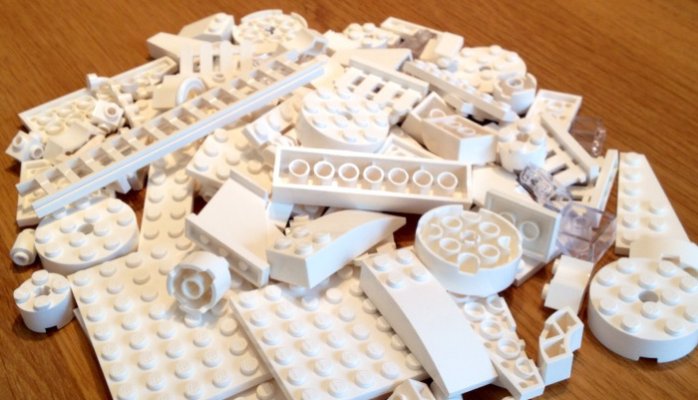
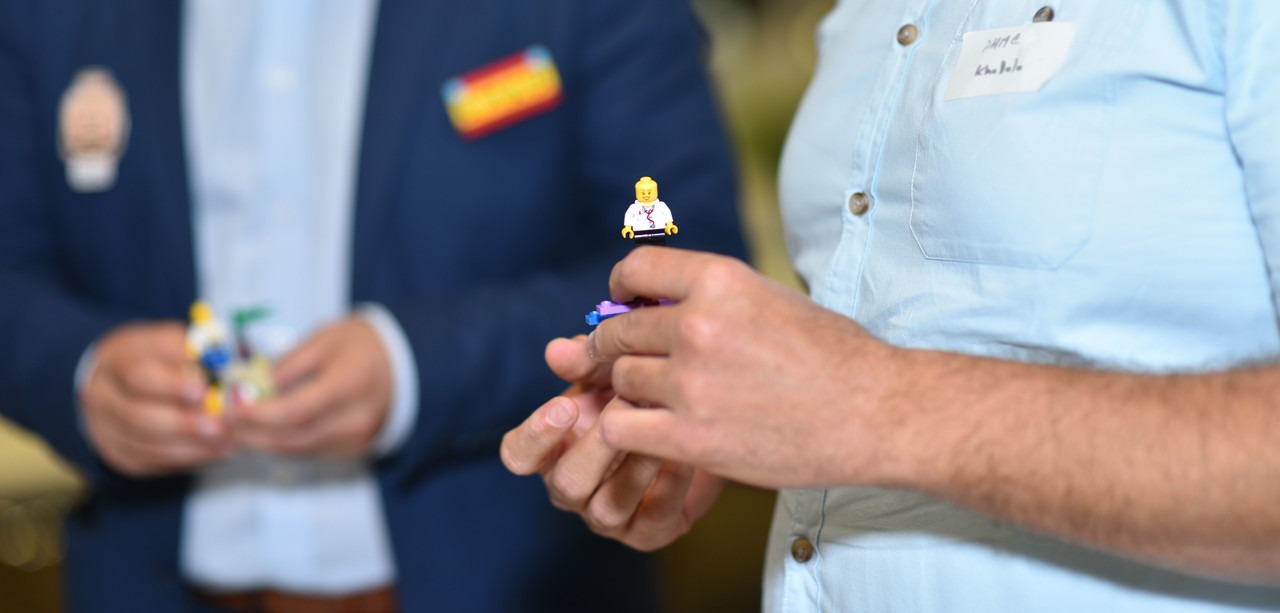



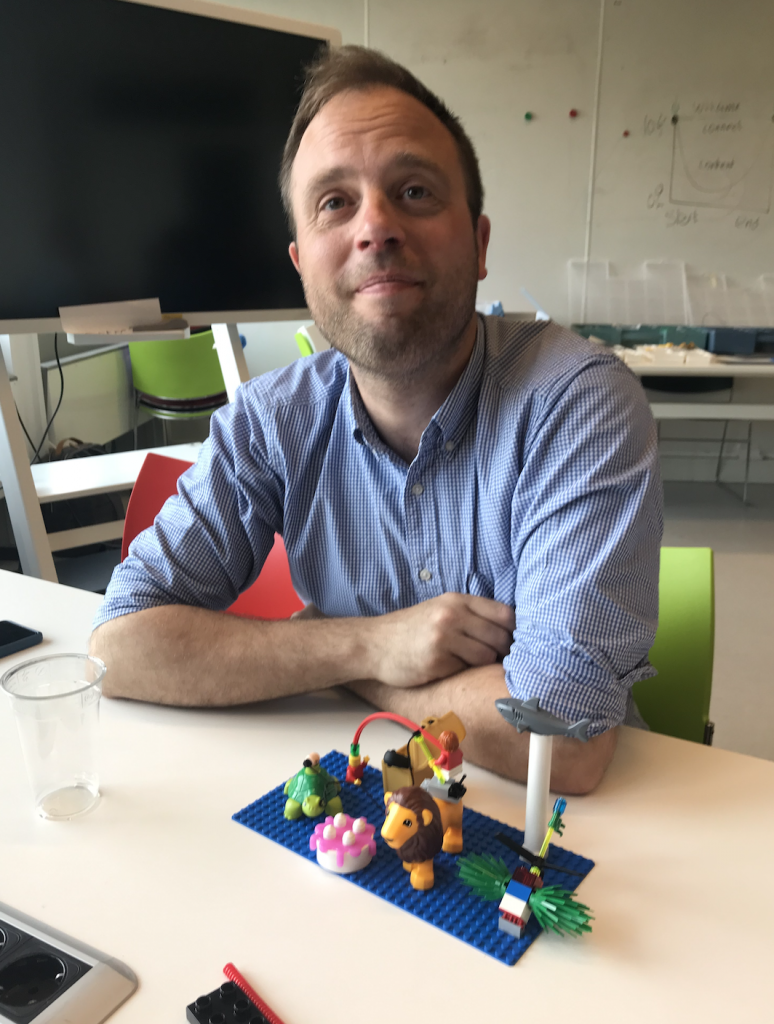

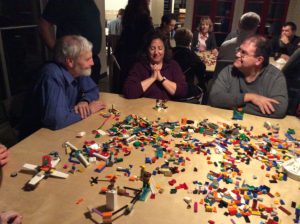
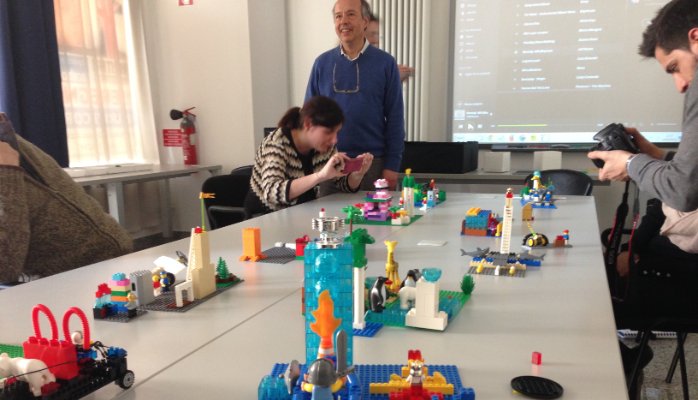

 Become a LEGO Serious Play facilitator - check one of the upcoming training events!
Become a LEGO Serious Play facilitator - check one of the upcoming training events!
This is a great idea. I’ve got a team meeting coming up and our team is quite new in the business. I’m going to try and adapt this so that the team works to communicate it’s aims to the wider business (and to ourselves for that matter)